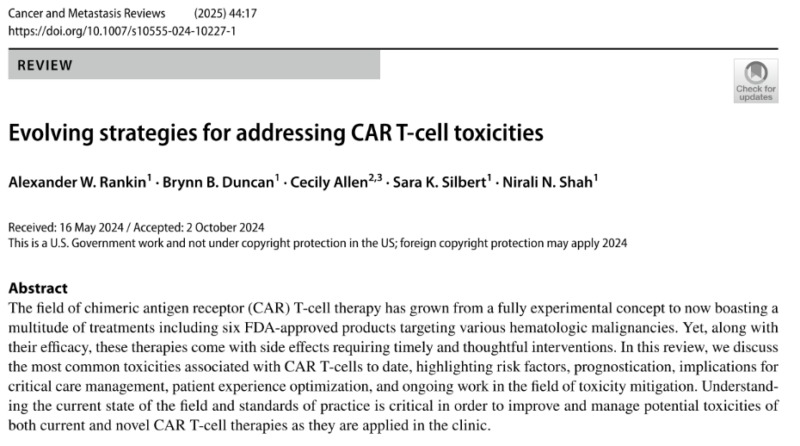
Francisco Conesa Buendía: Comprehensive Insights into CAR T-Cell Therapy Toxicities and Management Strategies
Assistant, Cell and Gene Therapies Manufacturingat Memorial Sloan Kettering Cancer Center, shared a post on LinkedIn:
Comprehensive Insights into CAR T-Cell Therapy Toxicities and Management Strategies
This review in Cancer and Metastasis Reviews dives into the evolving strategies for addressing the toxicities of CAR T-cell therapies.
Here’s what you need to know:
Key Challenges in CAR T Therapy:
Cytokine Release Syndrome (CRS): A common toxicity caused by an intense immune response, leading to fever, hypotension, and organ dysfunction.
Stats: CRS occurs in up to 84% of patients, with low-grade CRS (Grade 1–2) more frequent for axi-cel compared to tisa-cel.
Solutions: IL-6 blocker tocilizumab and corticosteroids work wonders when used early. Fractionated CAR doses are emerging as a safer approach.
Neurological Toxicity (ICANS): Symptoms like confusion, seizures, and cerebral edema can occur, typically following CRS.
Insights: ICANS is more common with axi-cel (up to 28%) compared to tisa-cel (10%).
Medical Care: Corticosteroids remain the go-to treatment. For severe cases, therapies like anakinra and intrathecal steroids show promise.
Hematologic Toxicities (ICAHT): Severe cytopenias, sometimes lasting months, are frequent.
Approach: G-CSF helps neutropenia recovery, while transfusions and thrombopoietin agonists support platelet counts.
Infections and Immunosuppression: Post-CAR infections occur in up to 55% of patients, due to weakened immunity from B-cell aplasia.
Prevention: Robust bacterial, viral, and fungal prophylaxis and IgG replacement for hypogammaglobulinemia.
On-Target/Off-Tumor Effects: These occur when CAR T-cells attack healthy tissues expressing the same target antigen. For example, solid tumor CAR T therapy faces hurdles due to shared antigen expression.
Advances and What’s Ahead
Real-world data: Comparisons like axi-cel vs. tisa-cel in DLBCL reveal important nuances in toxicity profiles.
Engineering innovation: New constructs and fractionated dosing are reducing toxicity risks.
Risk predictors: Elevated CRP, ferritin, and platelet counts help identify high-risk patients and guide early interventions.
As CAR T therapies expand to treat solid tumors and autoimmune diseases, addressing toxicity remains crucial to their success.
Evolving strategies for addressing CAR T-cell toxicities
Authors: Alexander W. Rankin, Brynn B. Duncan, Cecily Allen, Sara K. Silbert & Nirali N. Shah

-
Challenging the Status Quo in Colorectal Cancer 2024
December 6-8, 2024
-
ESMO 2024 Congress
September 13-17, 2024
-
ASCO Annual Meeting
May 30 - June 4, 2024
-
Yvonne Award 2024
May 31, 2024
-
OncoThon 2024, Online
Feb. 15, 2024
-
Global Summit on War & Cancer 2023, Online
Dec. 14-16, 2023
